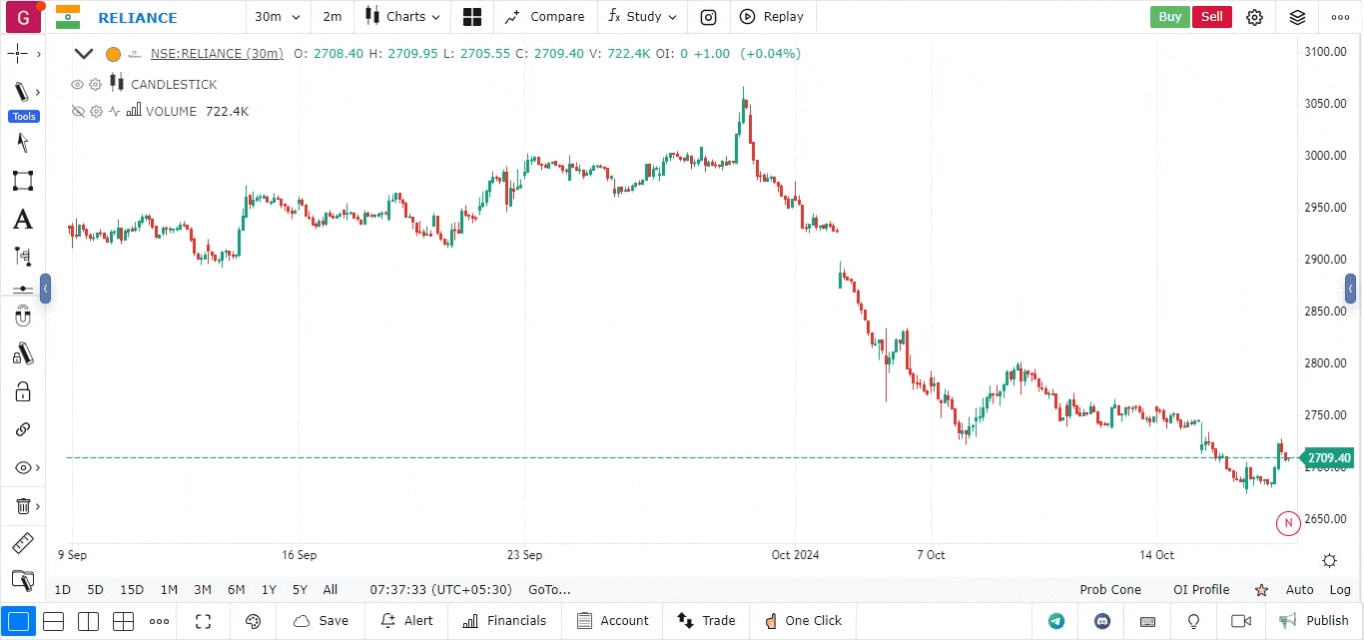Bollinger Bands
Bollinger Bands are a widely used technical analysis indicator that helps traders identify volatility, potential breakouts, and overbought or oversold market conditions. The platform provides comprehensive tools to utilize Bollinger Bands effectively in its charting platform.
Bollinger Bands
Bollinger Bands were developed by John Bollinger to measure market volatility. They consist of three components:
- Middle Band (Simple Moving Average): Typically a 20-period simple moving average (SMA).
- Upper Band: Calculated as the middle band plus a specified number of standard deviations (usually 2) of the asset’s price.
- Lower Band: Calculated as the middle band minus the same number of standard deviations.
Key Concepts:
- Volatility: The bands expand when volatility is high and contract when volatility is low.
- Overbought and Oversold Conditions: When the price touches or exceeds the upper band, the asset may be overbought. When it touches or falls below the lower band, it may be oversold.
- Mean Reversion: Prices tend to return to the middle band (SMA), making it a potential signal for reversal trades.
Adding Bollinger Bands
- How to Add Bollinger Bands to Your Chart:
- Open the platform and select the asset chart you wish to analyze.
- Go to the Indicators menu on the top toolbar.
- Search for “Bollinger Bands” in the indicator search bar.
- Click on the indicator to add it to your chart.

- Configuring Bollinger Band Settings:
- Length/Period: The default setting is usually a 20-period SMA, but you can adjust it based on your trading style.
- Standard Deviation: The most common setting is 2 standard deviations, which determines the width of the bands.
- You can fine-tune these parameters to make the Bollinger Bands more sensitive (shorter period, lower standard deviation) or smoother (longer period, higher standard deviation) depending on your trading strategy.
Interpreting Bollinger Bands
-
Squeeze and Breakout:
- When the bands contract (squeeze), it indicates low volatility, and a breakout may be imminent. A squeeze often precedes a sharp move in either direction.
- After a squeeze, if the price breaks above the upper band, it is considered a bullish breakout signal. If it breaks below the lower band, it is considered bearish.
-
Overbought and Oversold Conditions:
- Overbought: When the price touches or exceeds the upper Bollinger Band, it may indicate that the asset is overbought, and a pullback or correction could occur.
- Oversold: When the price touches or falls below the lower Bollinger Band, it suggests that the asset is oversold, and a rebound may be on the horizon.
-
Mean Reversion Strategy:
- Traders often look for price reversion to the mean (middle SMA) after touching the upper or lower bands.
- If the price moves back towards the middle band after hitting the upper or lower band, it can be seen as a potential trading opportunity.
Trading Strategies with Bollinger Bands
-
Bollinger Band Breakout Strategy:
- Entry: Buy when the price closes above the upper band, indicating a potential bullish breakout.
- Exit: Consider exiting when the price starts to move back toward the middle band or shows signs of reversal.
- Sell Signal: If the price closes below the lower band, this could be a bearish breakout, signaling a short-selling opportunity.
-
Bollinger Band Reversal Strategy:
- Buy Setup: Enter a buy trade when the price touches the lower Bollinger Band, indicating an oversold condition, and begins to move up.
- Sell Setup: Enter a sell trade when the price touches the upper Bollinger Band, indicating an overbought condition, and starts to move down.
-
Double Bottom or Double Top with Bollinger Bands:
- Double Bottom: Look for a W-shaped pattern near the lower band, which can indicate a bullish reversal.
- Double Top: Look for an M-shaped pattern near the upper band, which may suggest a bearish reversal.